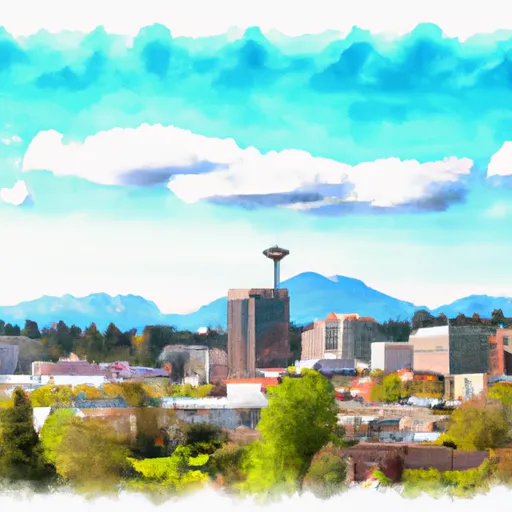-
 Snoflo Premium
Snoflo Premium
Get unlimited access to all our content
With no Ad interruptions! - Start Your Free Trial Login with existing account
Olympia
Eden Index
Climate
7.8
•
Recreation
3.4
•
Community
3.5
•
Safeguard
5.2/10

Olympia, Washington, is the capital city of the state and offers a pleasant climate with mild winters and warm summers. The city experiences an average annual rainfall of 50 inches and has a temperate maritime climate. Olympia is surrounded by natural beauty, with the Deschutes River flowing through the heart of the city and Budd Inlet providing access to the Puget Sound. The region is known for its lush forests, parks, and trails, making it an ideal destination for outdoor enthusiasts. Residents and visitors can enjoy activities like hiking, biking, kayaking, and fishing. The nearby Capitol State Forest offers numerous recreational opportunities, including camping and horseback riding, while the Nisqually National Wildlife Refuge provides a stunning setting for birdwatching and wildlife observation.
What is the Eden Index?
The Snoflo Eden Index serves as a comprehensive rating system for regions, evaluating their desirability through a holistic assessment of climate health, outdoor recreation opportunities, and natural disaster risk, acknowledging the profound impact of these factors on livability and well-being.
Climate Health Indicator (CHI): 7.8
Olympia receives approximately
1293mm of rain per year,
with humidity levels near 88%
and air temperatures averaging around
11°C.
Olympia has a plant hardyness factor of
8, meaning
plants and agriculture in this region tend to thrive here all year round.
By considering the ideal temperature range, reliable water supplies, clean air, and stable seasonal rain or snowpacks, the Climate Health Indicator (CHI) underscores the significance of a healthy climate as the foundation for quality living.
A healthy climate is paramount for ensuring a high quality of life and livability in a region, fostering both physical well-being and environmental harmony. This can be characterized by ideal temperatures, reliable access to water supplies, clean air, and consistent seasonal rain or snowpacks.
Weather Forecast
Streamflow Conditions
Puget Sound
Area Rivers
Puget Sound
Snowpack Depths
Puget Sound
Reservoir Storage Capacity
Puget Sound
Groundwater Levels
Recreational Opportunity Index (ROI): 3.4
The Recreational Opportunity Index (ROI) recognizes the value of outdoor recreational options, such as parks, hiking trails, camping sites, and fishing spots, while acknowledging that climate plays a pivotal role in ensuring the comfort and consistency of these experiences.
Access to outdoor recreational opportunities, encompassing activities such as parks, hiking, camping, and fishing, is crucial for overall well-being, and the climate plays a pivotal role in enabling and enhancing these experiences, ensuring that individuals can engage in nature-based activities comfortably and consistently.
Camping Areas
| Campground | Campsites | Reservations | Toilets | Showers | Elevation |
|---|---|---|---|---|---|
| Jarrell Cove State Park | None | 50 ft | |||
| Penrose Point State Park | 82 | 15 ft | |||
| Kopachuck State Park | 21 | 234 ft | |||
| Joemma Beach State Park | 19 | 86 ft | |||
| Twanoh State Park | 47 | 46 ft | |||
| Tenino City Park | None | 287 ft | |||
| Stan Hedwall Park | None | 181 ft | |||
| Millersylvania State Park | 168 | 219 ft |
Nearby Ski Areas
Catastrophe Safeguard Index (CSI):
The Catastrophe Safeguard Index (CSI) recognizes that natural disaster risk, encompassing floods, fires, hurricanes, and tornadoes, can drastically affect safety and the overall appeal of an area.
The level of natural disaster risk in a region significantly affects safety and the overall livability, with climate change amplifying these risks by potentially increasing the frequency and intensity of events like floods, fires, hurricanes, and tornadoes, thereby posing substantial challenges to community resilience and well-being.
Community Resilience Indicator (CRI): 3.5
The Community Resilience Indicator (CRI) recognizes that education, healthcare, and socioeconomics are crucial to the well-being of a region. The CRI acknowledges the profound impact of these elements on residents' overall quality of life. By evaluating educational resources, healthcare accessibility, and economic inclusivity, the index captures the essential aspects that contribute to a thriving community, fostering resident satisfaction, equity, and social cohesion.

